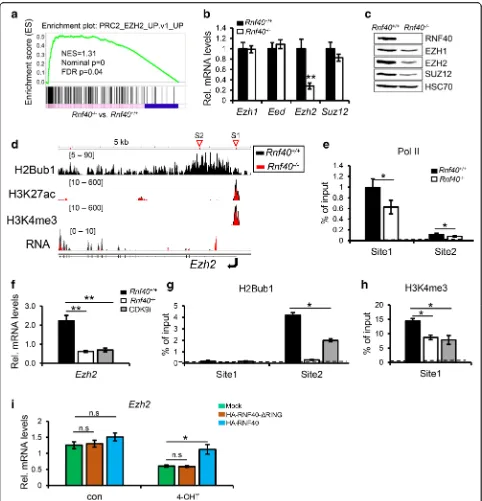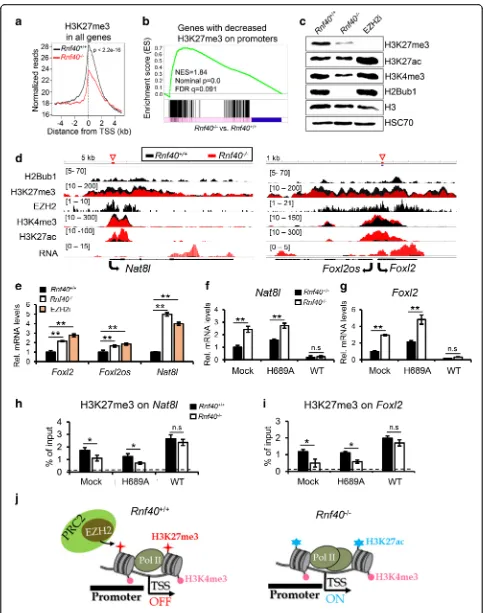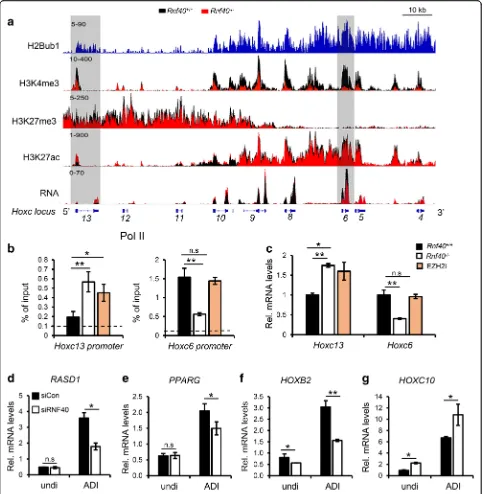RNF40 regulates gene expression in an epigenetic context dependent manner
Full text
Figure
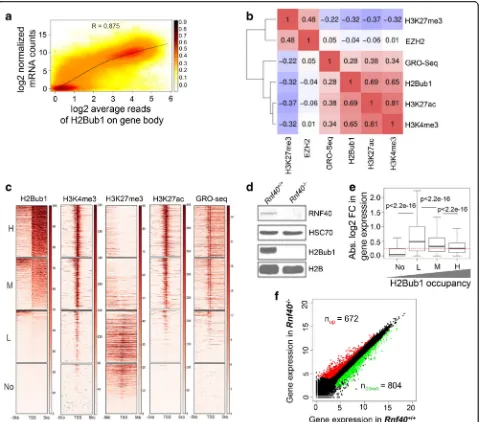
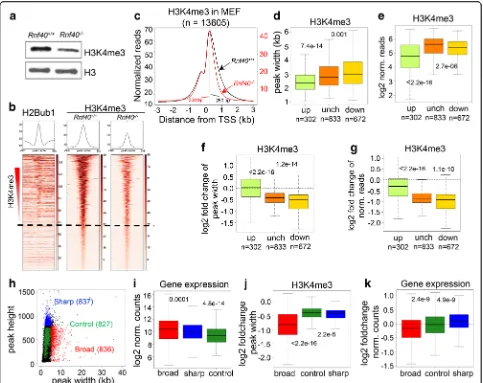
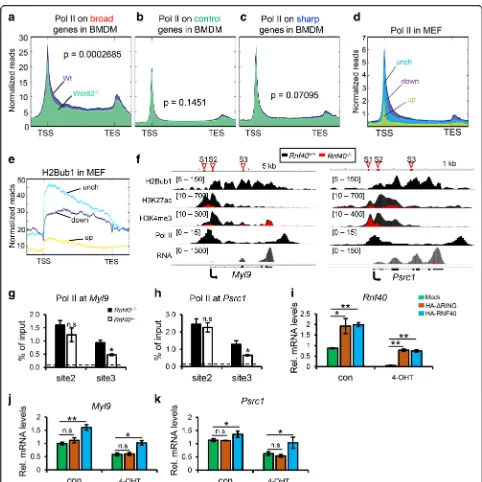
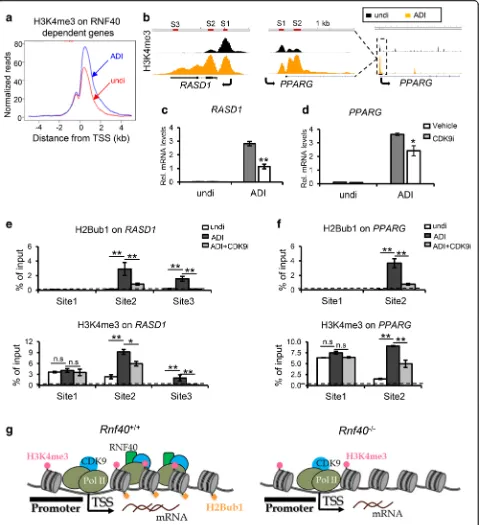
Related documents
of evidence supporting the putative role of TEAD4 as an oncogenic protein involved in breast cancer: (a) TEAD4 overexpression promoting DNA synthesis and
Conclusion: EMA and GLUT-1 are sensitive and specific markers that express more frequently in mesothelioma than in benign mesothelial lesions with higher specificity in the
During the entire experiment urea concentration and alkaline phosphatase activity were signifi cantly higher in ewes of the experimental group (with the intake of 5.1 mg iodine per
Due to positive spontaneous curvature of gM1 aggregates (see Figure 5B), such small gM1 aggregates would sense and stabilize small membrane protrusions A ). The binding of each
Key words: Approximate solutions, evolution equation, fractional calculus, nonlocal condition, continuous dependance, Hernandez's
4,21 the United States District Court for the District of Delaware allowed preinduction review of certain board action in- fringing upon such rights of the
Under the Treaty of Nice, voting in the Council on the issues that do not require unanimity requires three conditions to be satisfied: the measure must be supported
Notably, the atypical attentional patterns in the premutation group appear to be driven by increased saliency of averted gaze rather than diminished saliency of direct gaze, as
